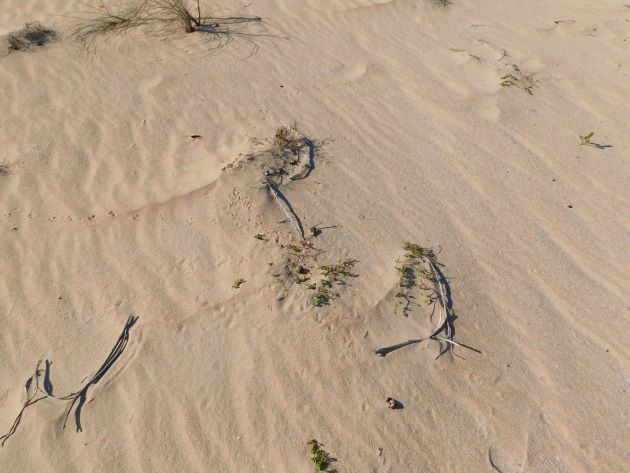
Around Broome at the moment there are less shorebirds than at other times of the year due to the annual shorebird migration. Many of the migratory shorebirds will start to return to Broome in coming weeks and months. We all hope that they were able to breed successfully in the Northern Hemisphere and that they can find food throughout the Flyway to return to our shores.
Our resident shorebirds have started to breed in the last few weeks and there are numerous Pied Oystercatcher nests along our shores right now. There are also Red-capped Plovers nesting along our coastline and their nests do vary. Sometimes they nest in rocky outcrops despite soft beach sand being close by. We have also observed pairs of Pied Oystercatchers choosing sand over rocks and each pair appears to use the same strategy year after year.
The Red-capped Plover nest that we have observed this week was by chance, which is often the case. The nest is in the header photo and you could easily overlook it. The strong winds we have had helped blow the footprints away and we were actually quite close when the female Red-capped Plover came off the nest. Reading her footprints you can easily observe that she got up and moved to the edge of the nest area and waited to see what we would do before running off. It was when she ran that we initially noticed her. We knew that she may well not be right at the nest when we initially noticed her movement and moved slowly forward making sure that we found her footprints and therefore the nest. The area was extremely exposed and at risk of being stood on or run over by a vehicle.
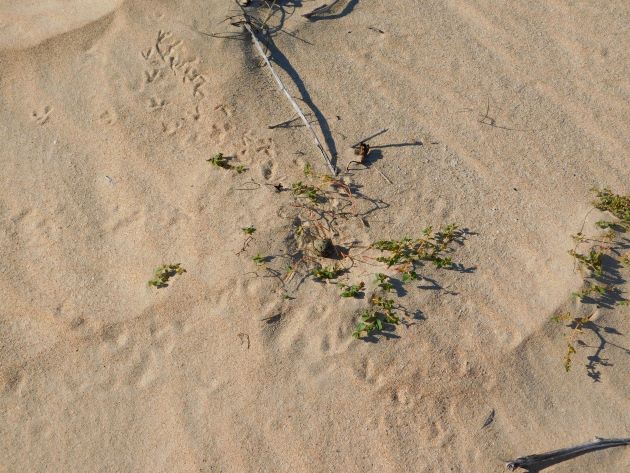
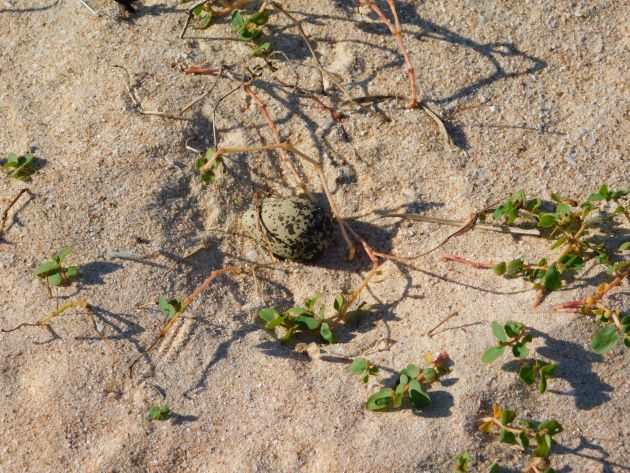
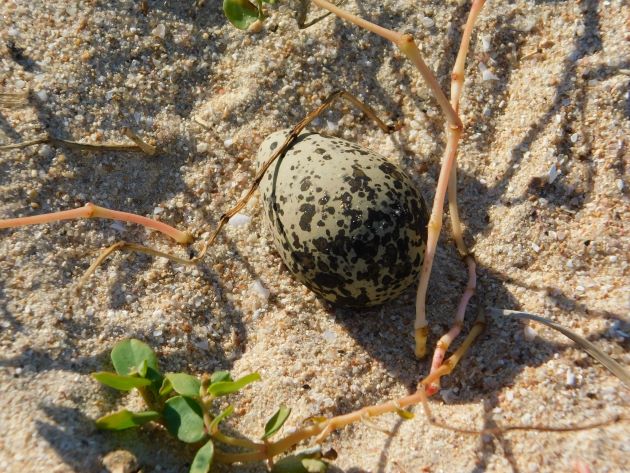
Red-capped Plover nest
We have mostly observed Red-capped Plover nests with two eggs, so she may well have laid another egg by now. The Red-capped Plover did not go far and we moved forward only stopping briefly to note the nest and take a couple of photos of her and then we moved away. She returned to the nest and there were a few other Red-capped Plovers on the beach near the Indian Ocean and high tide mark too. The male Red-capped Plover has a much darker “red cap” and they are believed to do most of the night time nest incubation. One theory is that she has much better camouflage on the nest during the daytime.
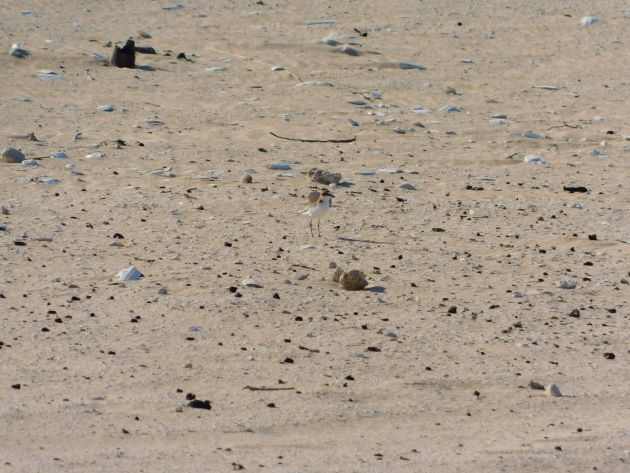
Red-capped Plover well camouflaged on the sand
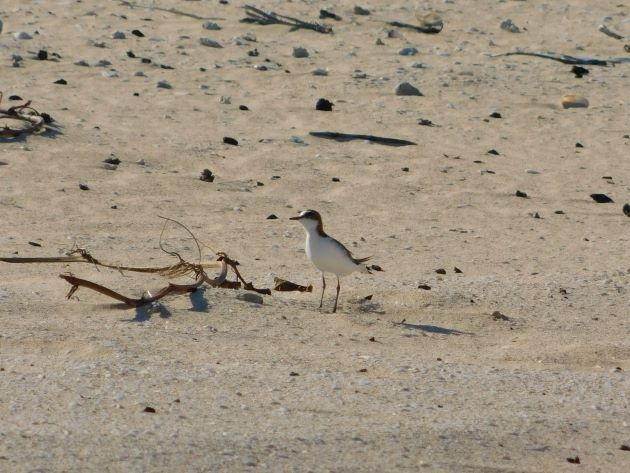
Red-capped Plover
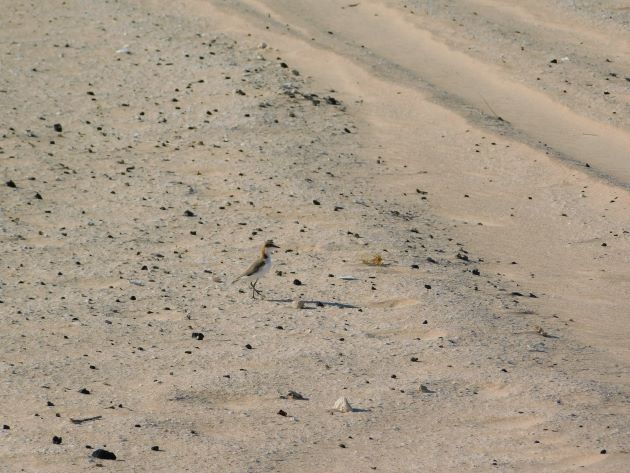
Close proximity to vehicle tracks near the nest
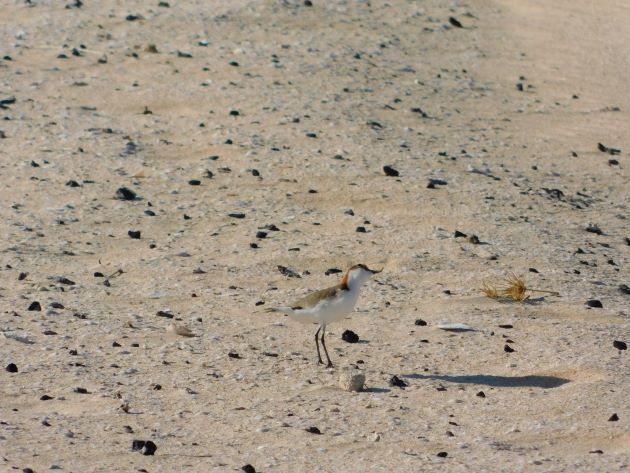
Red-capped Plover checking for threats from above
Once the eggs or eggs hatch out the Red-capped Plovers will take the young to the ocean and protect them. The Red-capped Plover family group will move back and forth up and down the beach as the tides rise and fall and try to avoid the vehicles that use our local beaches at this time of year. Ideally vehicle use is below the high tide mark and then the shorebirds can nest without having their nests run over.
One of my favourite photos of a Red-capped Plover chick hiding from threats was taken in 2011 and the chick was able to hide in a footprint.
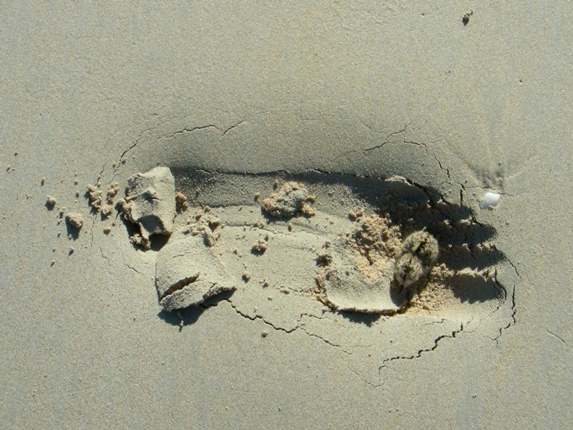
Red-capped Plover chick hiding
I hope you can see the chick near the toe prints! When the beach is so wide at low tide and devoid of hiding locations you clearly have to make a decision as to how far you can run and where you can hide!













Leave a Comment